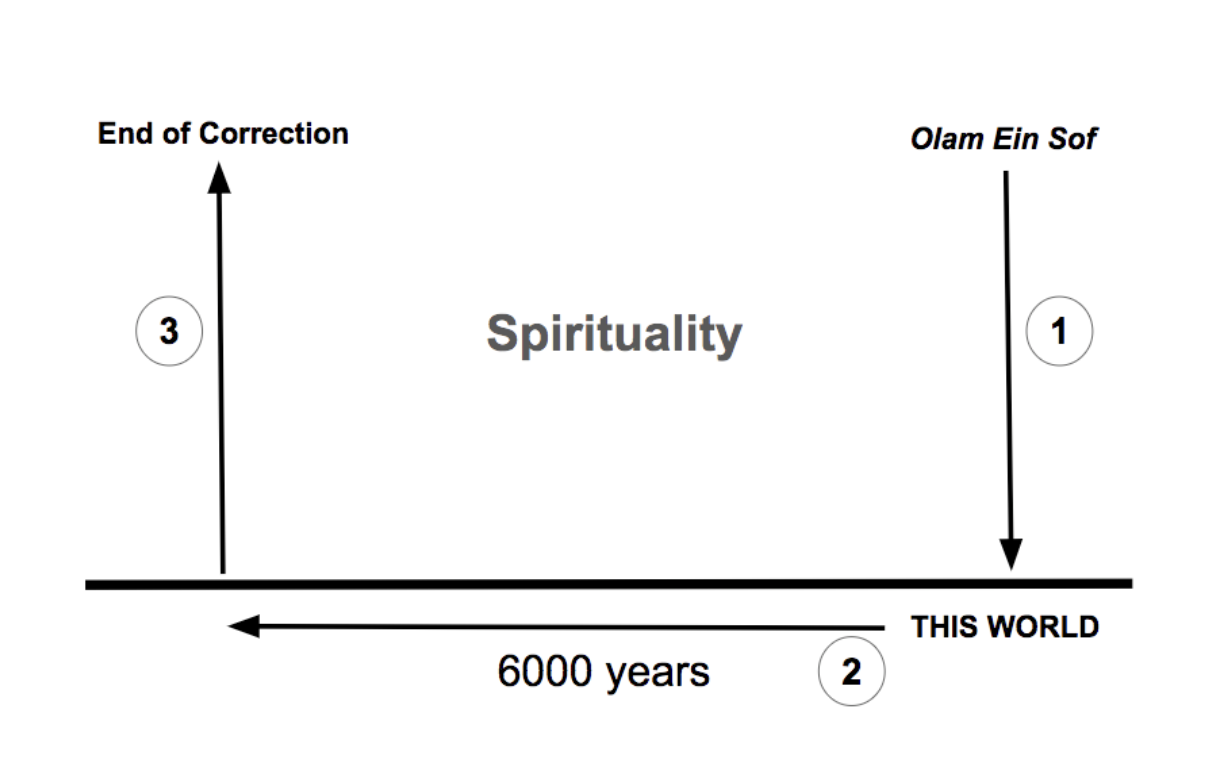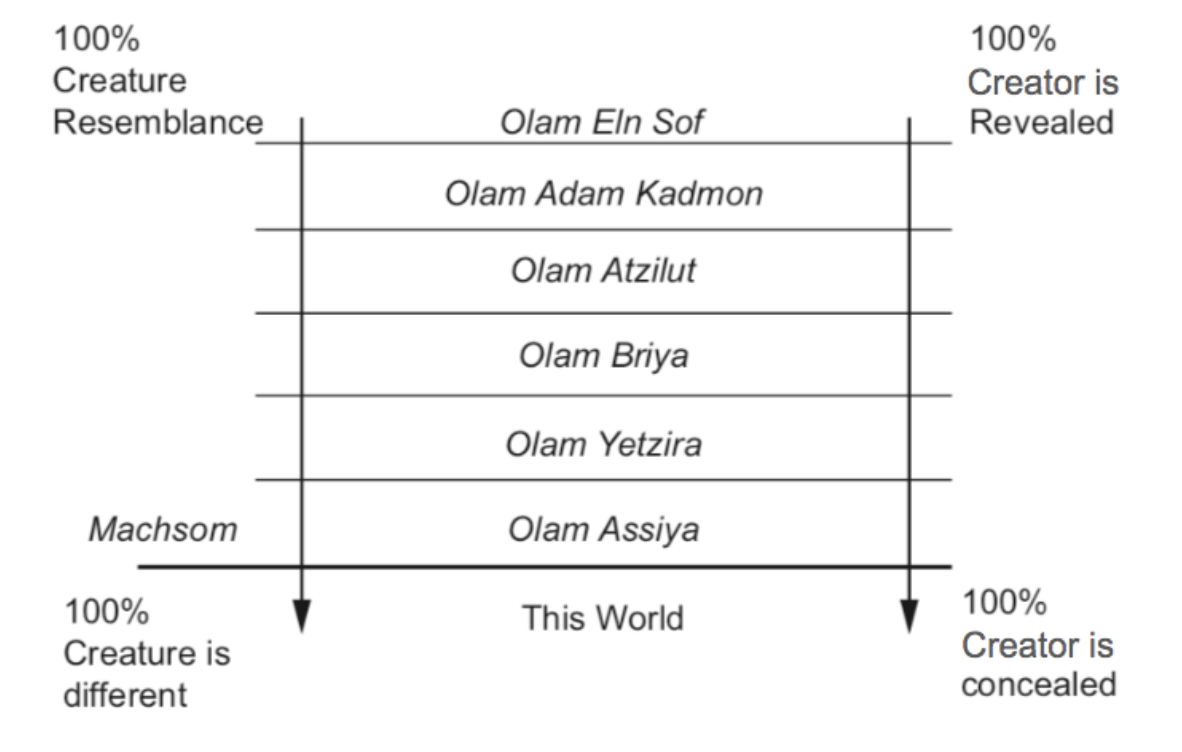"Hevruta" - following Lesson #3
The Three-Axis Model
"Fundamentals of the Wisdom of Kabbalah" Course Roadmap:
English Speakers - Meeting #3
Summary of last weeks
- Sunday noon: Live Course from Israel
- Tuesday Evening: Course in English
Nature
Nature is an interconnected system
Some of the laws are known, some are yet to be revealed
Part of the system is revealed, and part is still concealed.
Characteristics of the will to receive
- Our desires are growing all the time.
- Fillings, which are achieved by much effort, are felt for a short time and disappear.
- Desires are not under the control of the person.
- Desires are strongly influenced/controlled by the environment.
“The Essence of the Wisdom of Kabbalah”
- The Thought of Creation and its purpose
- Coincidence or design — is there a guiding system behind reality?
- Introduction to authentic Kabbalah sources
Kabbalistic Glossary
Point in the Heart – The desire to uncover spirituality, which arises within a person.
In the Wisdom of Kabbalah, the "heart" represents all of a person’s corporeal desires, while the "point in the heart" signifies a new desire to reveal the purpose of life.
- Wisdom of Kabbalah – A method for revealing the Creator to the created in this world.
- Creator – From the Hebrew word Bo’Reh, meaning “come and see”; the general force of nature, the will to bestow.
- Kli (Hebrew: vessel) – A desire, creature, or the will to receive.
- World (Hebrew: Olam) – Derived from Ha’alama, meaning "concealment”.
Definition of the Wisdom of Kabbalah
“This wisdom is no more and no less than a sequence of roots that hang down by way of cause and consequence, following fixed, determined laws that interweave into a single, exalted goal described as “the revelation of His Godliness to His creatures in this world.””
- Baal HaSulam, The Essence of the Wisdom of Kabbalah
"This wisdom is generally divided into two parallel, equal, and identical orders, like two drops in a pond. The only difference between them is that the first order extends from above downward, to this world,
The second order begins in this world and traverses from below upward precisely by the same routes and make-ups imprinted at their root when they appeared from above downward.
- Baal HaSulam, "The Essence of the Wisdom of Kabbalah"
The Three Axis Model

(3) The order of descent described above—by which the will to receive is brought to its final form in this world—unfolds according to the four phases contained in the four letters of the Name HaVaYaH. For the four letters of HaVaYaH in His Name include the whole of reality, leaving nothing whatsoever outside of them.
From the perspective of the general structure, they are explained through the ten Sefirot: Hochma, Bina, Tifferet, and Malchut, together with their root. These are the ten Sefirot, for the Sefira of Tifferet contains within it six Sefirot referred to as Hesed, Gevura, Tifferet, Netzach, Hod, Yesod. The root is called Keter. However, in their essence they are called Hochma, Bina, Tifferet, Malchut (HBTM). Remember this well.
They are also the four worlds known as Atzilut, Bria, Yetzira, Assiya, and the world of Assiya includes within it this world. Thus, there is not a single creature in this world that is not renewed from Ein Sof, blessed be He—that is, from the Thought of Creation, which is to delight His creatures, as explained above.
Necessarily, it is immediately comprised of Light and kli (vessel), meaning some measure of abundance together with a will to receive that abundance. The measure of abundance extends from His Essence—existence from existence—while the will to receive that abundance is renewed as existence from absence, as mentioned.
And in order for that will to receive to come to its final form, it must necessarily descend—together with the abundance within it—through the four worlds: Atzilut, Bria, Yetzira, Assiya. Only then is the creature completed as Light and vessel, called the body and the Light of life within it.
Why do we need this concealement?
“The advantage of the light from the darkness.”
- Kohelet, Chapter 2:13
"It is known that nothing appears in its true form, only through its opposite, “As the advantage of the light from within the darkness.” This means that everything points to another, and by the opposite of something, the existence of its opposite can be perceived.
Hence, it is impossible to attain something in complete clarity if its parallel is absent."
- Baal HaSulam, Shamati 34
"For example, it is impossible to estimate and say that something is good, if its opposite, pointing to the bad, is missing. It is the same with bitterness and sweetness, love and hate, hunger and satiation, thirst and saturation, separation and adhesion. It turns out that it is impossible to come to love adhesion prior to acquiring the hate of separation."
- Baal HaSulam, Shamati 34
"The light of this world was created out of darkness, “As the advantage of the light from within the darkness,” and “What good is a candle during the day?” its light does not shine in the daytime. This is the meaning of the Klipa [shell/peel] that precedes the fruit. For this reason, he who becomes a partner to the Creator in the work of creation brings out the light from the darkness…"
- Baal HaSulam “You Have Made Me in Behind and Before"
"Now we can understand what are day and night in the work. A person should know that he must feel what is darkness, or he will not be able to enjoy the light, since in anything that a person wants to taste any flavor, whether it is worth using, he must learn one from the other, as it is written, “as the advantage of the light out of the darkness.” Likewise, a person cannot enjoy rest unless he knows what is fatigue.
- Rabash “What Are Day and Night in the Work?” Article No. 34, 1988
NEXT LESSON TOPIC
Lesson 4 — Nov 30, 2025
Perception of Reality
- Is what we perceive with the five senses the full reality?
- Why is Kabbalah called “a hidden wisdom”?
- Scientific developments and shifts in human perception.
- The hidden law of intention.
- The law of equivalence of form.
Extra slides
The 2nd axis
Prehistoric - basic desires
From 35,000 BCE to 4,000 BCE.
Desires for food, sex and shelter.
Humanity is divided into tribal societies of hunters and gatherers.
The 2nd axis
Antiquity - desires for money and possessions
From 4,000 BCE and up to the 5th century CE.
The peak of the agricultural revolution, many conquests creating new civilizations.
The 2nd axis
The Middle Ages - Desires for honor and power
From 5th century CE until the 15th century
- The formation of hierarchies, castes and classes;
- religious wars;
- humanity is divided according to religious/class affiliation.
The 2nd axis
Modern era - the desire for knowledge and erudition
From the 15th century to the end of the 20th century.
- Discoveries of continents
- The Renaissance period
- The Scientific Revolution
- Urbanisation
- The Industrial Revolution
- The Information Revolution
The development of the desire for pleasure
1. Prehistory - basic desires
From 35,000 BCE to 4,000 BCE. Desires for food, sex and shelter. Humanity is divided into tribal societies of hunters and gatherers.
2. Ancient times - desires for money and possessions
From 4,000 BCE and up to the 5th century CE. The peak of the agricultural revolution, many conquests creating new civilizations.
3. The Middle Ages - Desire for honor and power
From 5th century CE until the 15th c. The formation of hierarchies, castes and classes. Religious wars. Humanity is divided according to religious/class affiliation.
4. Modern era - Desire for knowledge and erudition
15th century to the end of the 20th c. Discoveries of continents; the Renaissance period; the Scientific Revolution; urbanisation; the Industrial Revolution, the Information Revolution.
Developmental stages of the desire
- The prehistoric period (about 35,000 years ago) →
- Antiquity (about 5,000 years ago) →
- The Middle Ages (up to the 15th century CE) →
- The Modern Era (from the 15th century onward) →
- The awakening of the point in the heart
Questions for Open Discussion
- What new insights or knowledge did you gain from Lesson 3?
- What aspects of this topic would you like to explore further?
Summary
- The Creator is the quality of bestowal — “Come and See.”
- Nature is a closed system with fixed and absolute laws.
- The advantage of light that comes from darkness.
- The three-axis model of development.
- The will to receive — the driving force of creation.
- We learn how to receive through the awakening of the point in the heart.
- The wisdom of Kabbalah teaches us how to receive correctly,
Extra Materials

